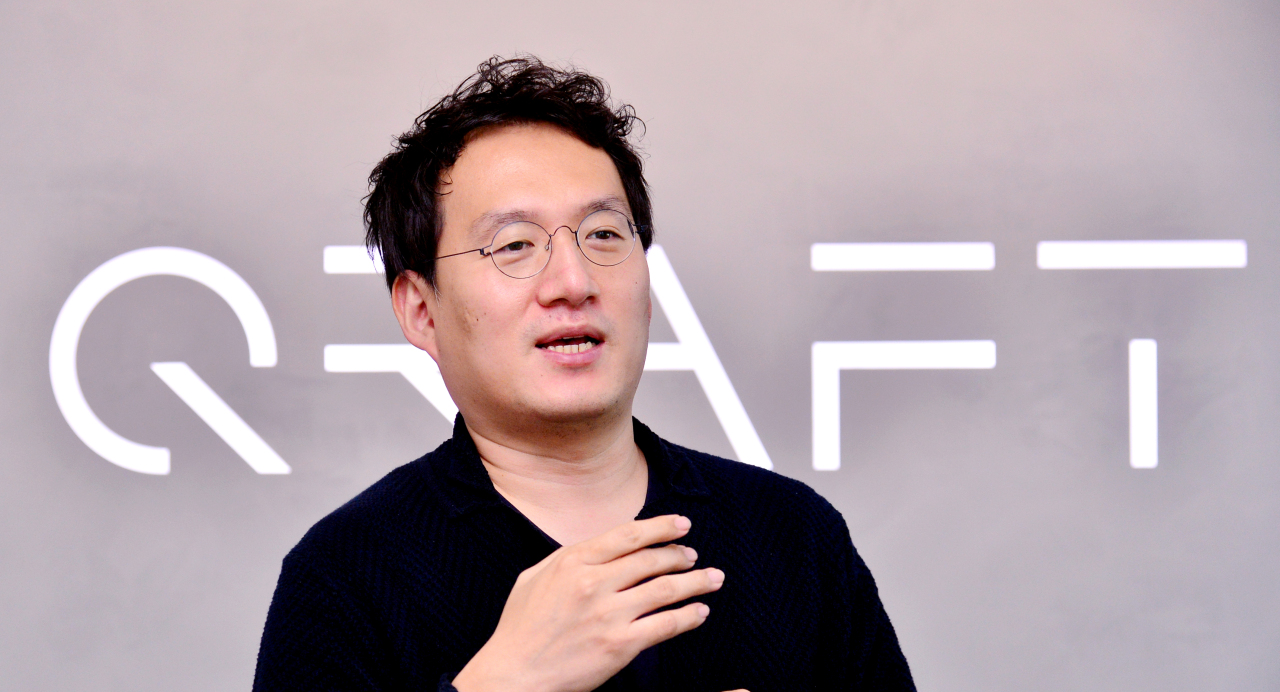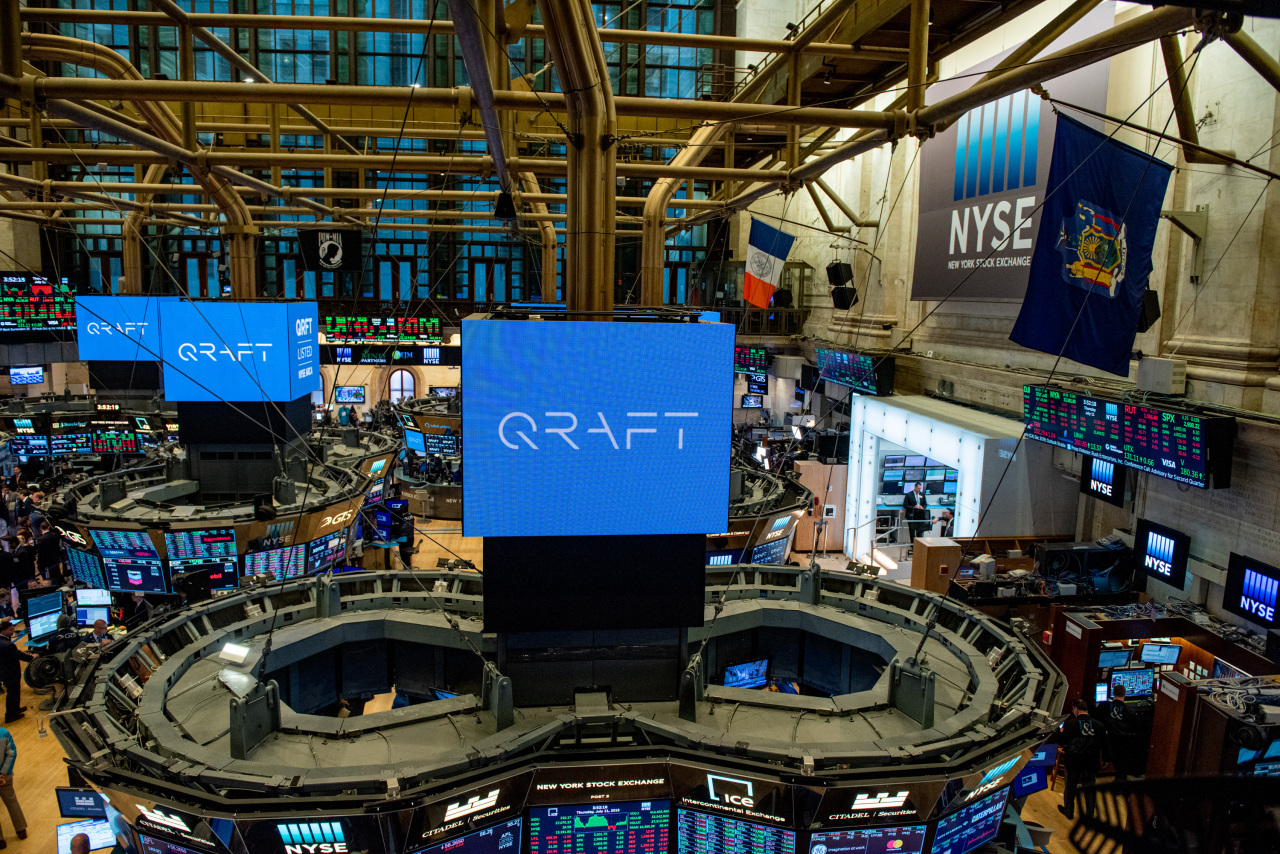 |
Qraft Technologies CEO Kim Hyung-sik speaks in an interview with The Korea Herald. (Park Hyun-koo/The Korea Herald) |
Every financial services company yearns for benefits from artificial intelligence, but oftentimes, the technology itself does not necessarily bring success.
Amid the intensifying technology race, a local AI solution provider behind the actively-managed equity exchange-traded funds listed on the New York Stock Exchange is seeking to prove its effectiveness.
“AI-enhanced ETFs’ track record is a testament to the thesis that AI can be an efficient tool to the entire financial industry,” said Kim Hyung-sik, chief executive officer of Seoul-based financial technology startup Qraft Technologies.
Kim said Qraft’s AI solution -- behind four ETFs in the United States with a combined $68.8 million assets under management as of June 1 -- can improve efficiencies in data processing to pick stocks that are expected to outperform and order execution to buy or sell stocks. AI is used throughout the asset management cycle, according to Qraft.
This led to outperformance of three AI-run ETFs for a year compared with respective benchmark indexes, excluding Next Value ETF that was launched in December 2020.
“What (AI does) is very close to managing a smart-beta ETF,” said the entrepreneur who leads the AI solution provider. “Imagine a single ETF that takes into account a plethora of strategies.”
Qraft’s AI technology has had some success in stock picking.
One of the four flagship ETFs, Qraft AI-Enhanced US Large Cap Momentum ETF, has recently gained media attention because it unloaded shares in electric vehicle maker Tesla before its stock price began to fall sharply in August 2020 and in January this year, and reinvested during the troughs.
The secret behind this is a strategy extraction process composed of two deep learning-powered modules: Factor Factory, which automatically searches for patterns that potentially bring excess returns; and Strategy Factory, designed to extract investment strategies.
“One AI engine plays the role of a research analyst, whereas the other engine’s role is close to a fund manager,” Kim said.
The scheme regularly rebalances its equity portfolio, based on the processed data sets with the assistance of some 3,000 data vendors that offer data points to Qraft.
The more factors Qraft gathers from Factor Factory, the more sophisticated Strategy Factor’s asset pricing models can become.
“The key is to incentivize AI engines to pick out the highest alpha factors out of a myriad of portfolio weighting function combinations, by giving it a reward once it outperforms,” he added.
 |
A Qraft Technologies logo is displayed on the New York Stock Exchange on the debut day of its exchange-traded fund products in May 2019. (Qraft Technologies) |
Qraft is teaming up with market maker Virtu to reduce volatility in its fund prices induced by sudden sell-offs.
The effect can be seen in the performance of the US Large Cap Momentum ETF, the largest of Qraft’s four funds.
Investors who chose to automatically reinvest income from the funds, such as dividends and capital gains, would have seen annual returns of 53.3 percent as of June 1.
But the market price of the listed product rose only 23.3 percent.
The difference is attributable to investors who chose to pocket the dividends and sold their investments soon afterward leading to a plunge in the ETF’s value in late 2020.
Its underlying S&P 500 Momentum Index rose 28.8 percent during the same period.
Qraft aims to reduce the gap in the total return and the market return, by teaming up with Virtu, which provides liquidity to mitigate the gap between offering and bidding prices during sudden sell-offs.
It will be the latest addition to Qraft’s current partners, such as US-based private-label ETF adviser Exchange Traded Concepts and compliance service provider Foreside.
Qraft and its partners plan to list active fixed-income ETFs and thematic ETFs. Kim thinks that, especially for thematic ETFs, AI-powered rebalancing will bring bigger returns than funds managed by humans.
Kim, who studied electrical engineering, got into the world of trading in 2006 as he and his friends had their own model for algorithm-based trading of derivatives. But starting in the early 2010s their algorithm no longer outperformed the market.
“Competition among quant traders has intensified since the early 2010s with the arrival of (foreign) algorithm-based trading companies on the stock market. Large asset allocations went to products by companies that are equipped with hundreds of research analysts and plenty of strategies behind them,” he said.
Founding Qraft Technologies in 2016 to take advantage of deep-learning technologies in finance, Kim recalled that it was never easy to convince in the US market regulators because artificial intelligence was not covered in the rules on active management of equity ETF portfolios. Korea’s active ETF rules were nonexistent back then.
What helped in the process was a proven performance in a joint project with Mirae Asset Group’s Canadian subsidiary Horizons ETFs. Horizons‘s parent asset manager, Mirae Asset Global Investments, holds a 8.4 percent stake in Qraft Technologies.
“The current regulatory framework for actively managed ETFs in the United States is largely designed based on management by human fund managers, so robots were not (a good) fit to operate under the framework in many ways,” Kim said
“The US ETF rules do not stipulate whether it was viable to use AI in portfolio management or not. What mattered instead to get the green light was the track record of how portfolio manager had performed, no matter whether it was human or AI.”
Two years after the launch of first two ETF products in 2019, its AI technology is now highly sought-after among Korean financial companies.
For example, Qraft Technologies’ deep-learning technology for stock picking is now being commercialized for a local brokerage house that undertakes the equity trading order execution for the National Pension Service.
Qraft aims to allow clients to use its AI to buy assets more cheaply. The company says its AI-based purchases are roughly 0.02 percent cheaper than the volume weighted average price, a benchmark for traders that is also calculated using an algorithm.
Moreover, he argued the same engine may have other uses in the finance industry, such as automated asset allocations for an ETF-managed portfolio, as well as personalized product recommendations for banking customers.
“AI is pliable,” Kim said. “We are seeing a demand for customization to cater to the demand of financial services of various companies, not limited to fund managers.”
By Son Ji-hyoung (
consnow@heraldcorp.com)








![[Weekender] Korea's traditional sauce culture gains global recognition](http://res.heraldm.com/phpwas/restmb_idxmake.php?idx=644&simg=/content/image/2024/11/21/20241121050153_0.jpg)
